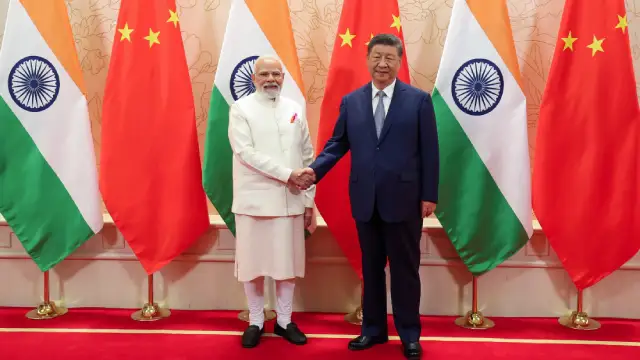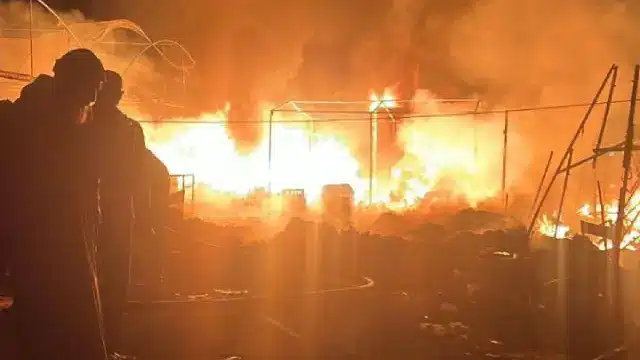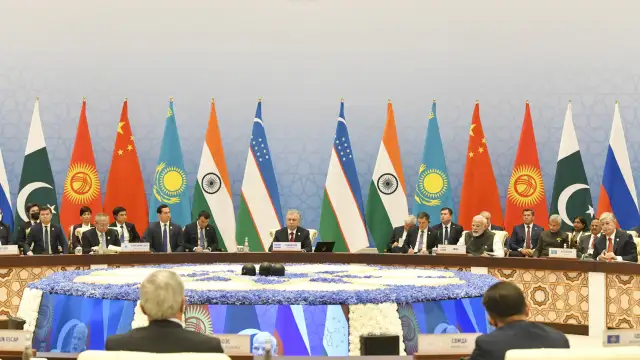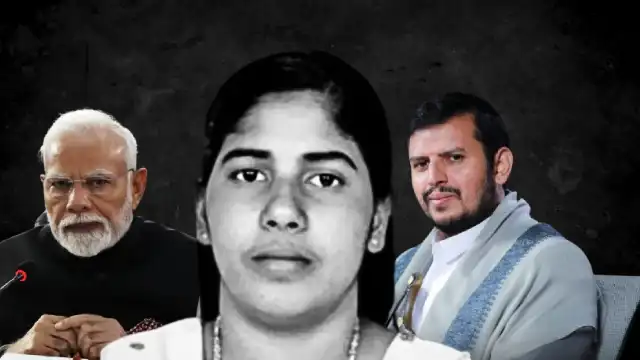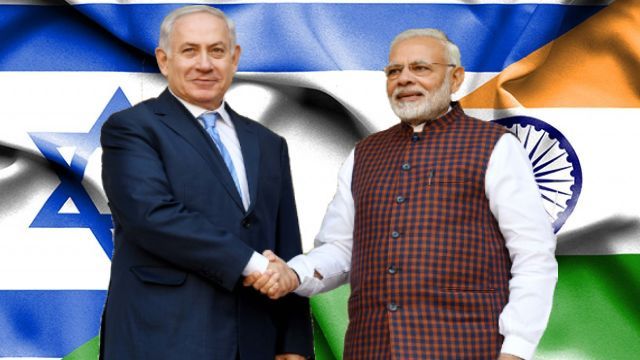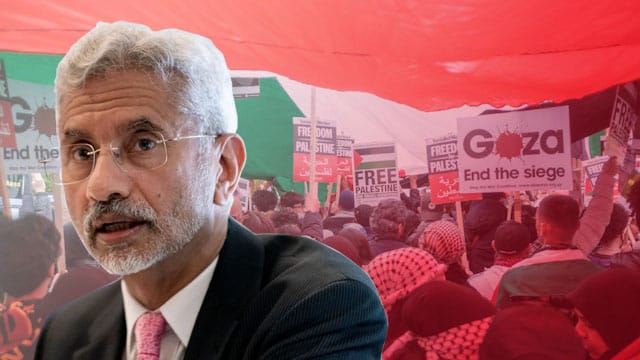Indian Prime Minister Narendra Modi’s trip to Ukraine, following his Poland tour, is scheduled for August 23rd, which has now created a new wave of discourse over India’s diplomacy. During Mr Modi’s Ukraine visit, he’s supposed to meet the controversial ‘President’ Volodymyr Zelenskyy.
This visit, after his recent tour to Russia, for which he was criticised by the West, is supposed to provide Mr Modi with a better scope to present himself as a diplomatic trouble-shooter. His dialogue with Mr Zelenskyy and the subsequent pitching for an end to the war would help him appease New Delhi’s partners in the West, especially the US, who expressed dismay over Mr Modi’s Russia visit.
While the Ministry of External Affairs (MEA) has downplayed the allegations that Mr Modi’s Ukraine visit is an act to appease the West, the facts show otherwise.
Why Mr Modi’s Ukraine visit is crucial?
Mr Modi’s Ukraine visit is one of the first for any Indian prime minister in the last three decades after the countries established diplomatic ties following the collapse of the Soviet Union.
While Mr Modi claimed that he is going there at the invitation of Mr Zelenskyy and wants to strengthen India-Ukraine friendship, the tour appears as a damage control measure by New Delhi to appease the US-led collective West.
Mr Modi has been compelled to visit Poland and Ukraine, as his visit to Russia and meeting with President Vladimir Putin has irked the US administration.
On July 8th, when Mr Modi was meeting Mr Putin, the US Department of States Spokesperson Matthew Miller told the press, “I will look to Prime Minister Modi’s public remarks to see what he talked about, but as I said, we made quite clear directly with India our concerns about their relationship with Russia.”
“And so we would hope India and any other country, when they engage with Russia, would make clear that Russia should respect the UN Charter, should respect Ukraine’s sovereignty and territorial integrity,” Mr Miller had added.
The US National Security Advisor (NSA) Jack Sullivan warned India that “a bet on Russia as a long-term, reliable partner is not a good bet”.
One of the reasons the US-led West was angered by Mr Modi’s Russia visit, despite knowing the historical strong ties between the countries, was the fact that it took place amid the summit of the US-led anti-Russia military bloc named North Atlantic Treaty Organization (NATO) in Washington.
Soon after Mr Sullivan’s threat, India’s NSA Ajit Doval met him to resolve the differences and mitigate threats to India-US relations, which is dearer to New Delhi than its relationship with Moscow.
It’s doubted that the idea of Mr Modi’s Ukraine visit was mulled during the meeting of the two NSAs. Both sides “agreed to work closely to further advance India-US relations, which are built on shared values and common strategic and security interests” following their meeting.
Mr Modi, who had met Mr Zelenskyy during his maiden foreign trip after returning to power for the third term in the first week of June, is now going to Ukraine to show the US that he values India’s relationship with it.
Moreover, this will also help him solidify his position in India, where his far-right Hindutva-driven Bharatiya Janata Party (BJP) is expecting a massive mass movement stoked by the US-funded organisations to topple the regime like Bangladesh.
But why did Modi visit Russia?
Mr Modi’s Russia visit during the NATO summit was a result of his desperate attempt to woo Moscow after skipping the crucial Shanghai Cooperation Organization (SCO) Summit in Astana on July 3rd-4th.
While the prime minister showed the ongoing Indian Parliament session to skip the meeting, it doesn’t seem the case as he had earlier travelled overseas during ongoing Parliament sessions.
An attempt to avoid facing Chinese President Xi Jinping and his Pakistani counterpart appears to be the reason behind Mr Modi skipping the SCO Summit in Astana. Moreover, Mr Modi didn’t want to give the West a message, especially after joining the G-7 Summit on the India-Middle East-Europe Economic Corridor (IMEC) project, that India is allying with China and Russia in their proposed comprehensive security infrastructure for the Eurasian region.
Mr Modi is promoting the US-backed IMEC as an antidote to China’s ambitious Belt-Road Initiative (BRI).
India has been a part of the US-led “rules-based” defence system and is an integral part of the US’s “Indo-Pacific” war theatre.
India is a member of the US-led Quadrilateral Security Dialogue or QUAD, which is an anti-China military entente in the Indo-Pacific region.
In these circumstances, India can’t showcase itself standing with China and Russia, countries whom the US considers its enemies. Therefore, Mr Modi skipped the SCO Summit.
However, at the same time, it became imperative to ensure the Russians don’t consider it as Mr Modi’s drifting away. Hence, a quick tour to Moscow was arranged on July 8th, when the prime minister met Mr Putin and discussed bilateral issues.
During his Russia visit, Mr Modi followed the US’s guidelines on Ukraine and asked Mr Putin to return to dialogue from the battlefield to resolve the issue.
Moreover, he also didn’t sign an Indo-Russia military pact like the proposed Reciprocal Exchange of Logistics Agreement (RELOS)—in line with the Indo-US Logistics Exchange Memorandum of Agreement (LEMOA)—during his visit.
Both countries have been discussing RELOS since 2021, but it’s not signed, even though New Delhi has strengthened its relationship with the West and signed LEMOA with the US in 2016.
Is Modi’s balancing act working?
Mr Modi’s foreign policy goal is to align with the West while portraying a balancing act. The reason is simple, India’s big businesses, mostly represented by the Gujarati lobby, have strong ties with the West and have greater exposure in the US financial market.
Anything that disrupts their interests or brings down a series of sanctions on them will have repercussions for Mr Modi, whose BJP relies on this bloc for support and finances.
Mr Modi’s Ukraine visit amid the current scenario proves that his government is keen to appease the West, and it has hampered his balancing act.
While Mr Modi toured Poland, a NATO member, Russian President Putin welcomed Chinese Premier Li Qiang, who led a high-level delegation to strengthen Sino-Russian ties, much to India’s dismay.
Mr Modi has understood that it’s impossible to turn away Russia from China, which is now Moscow’s reliable ally, unlike the 1960s and 1970s when India received Moscow’s favour due to the Sino-Soviet split.
The only thing Mr Modi’s government is earnestly waiting for is former US president Donald Trump’s victory in the upcoming presidential polls. Mr Trump’s foreign policy aims at isolating China and befriending Russia, which works in India’s interests.
However, even though Mr Trump wins the elections, it’d be hard for him to bring a drastic policy change across the US administration and its NATO allies. Such attempts can further intensify the political battle in the US.
In such a situation, Mr Modi’s Ukraine visit, his attempt to woo the West, etc, will only act detrimental to the long-term geopolitical interests of India, which is drifting from the emerging multipolar power bloc and standing with the West, which is extremely crisis-ridden at present.
Join our channels on Telegram and WhatsApp to receive geopolitical updates, videos and more.


